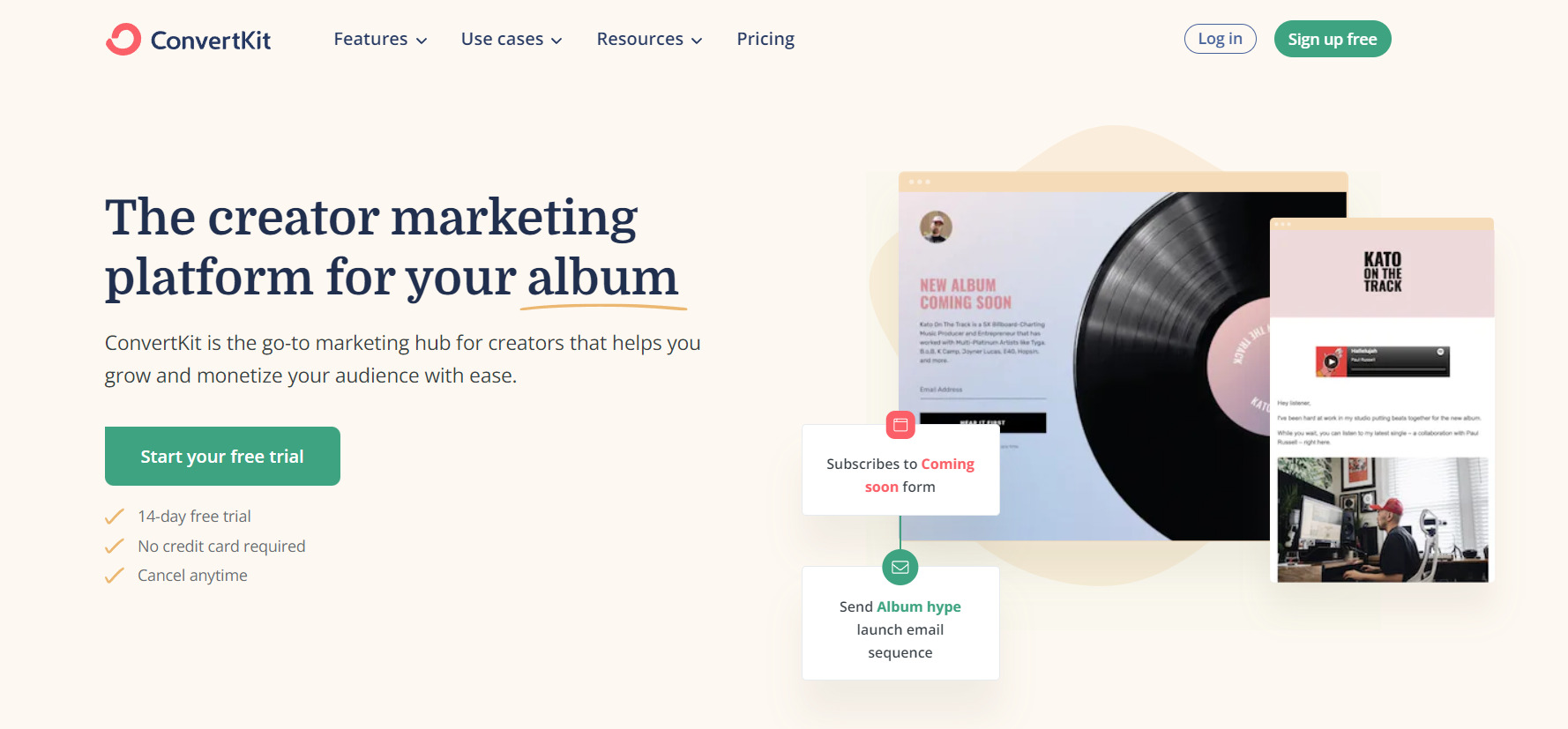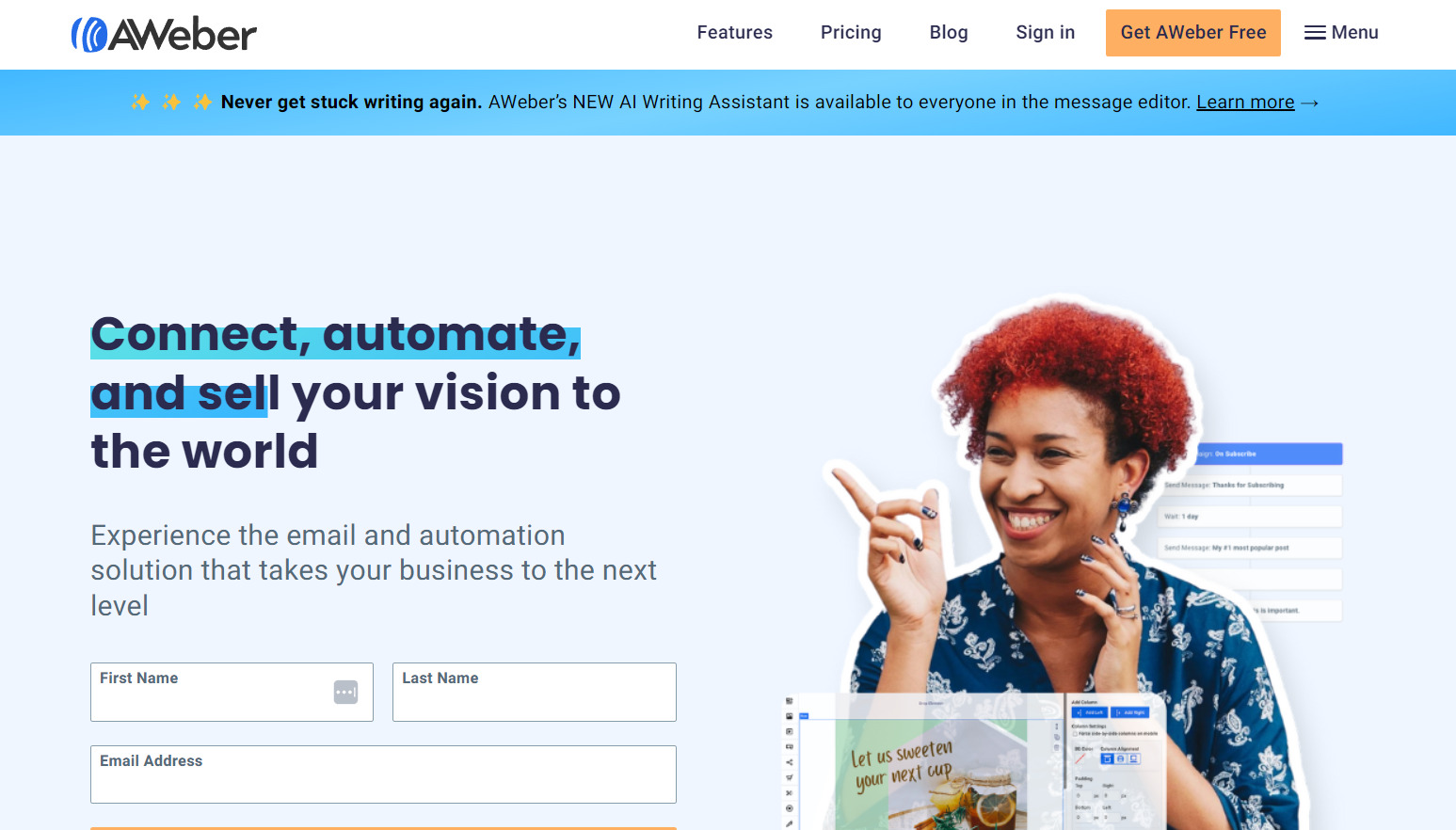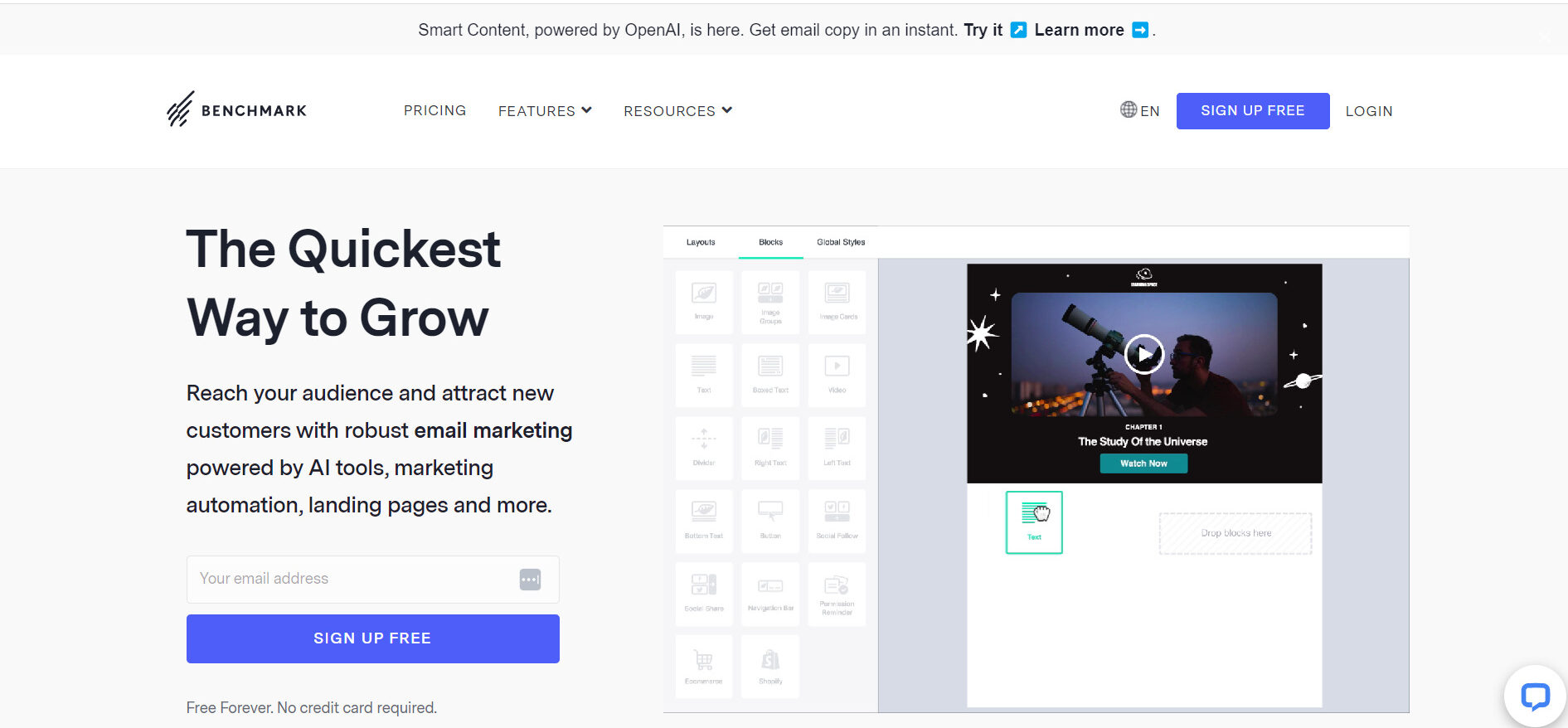
Constant Contact has long been a popular choice for businesses seeking an email marketing solution. With its robust features and user-friendly interface, it has helped countless organizations effectively engage with their audiences. However, as the marketing landscape evolves and businesses seek more diverse options, it’s important to explore alternative email marketing solutions that offer unique features and capabilities.
In this article, we delve into a range of alternatives to Constant Contact, highlighting their key strengths and benefits. Whether you’re a small business looking for affordability, an enterprise seeking advanced automation, or a creative professional craving design flexibility, there are alternative email marketing platforms out there that may better suit your specific needs. Join us as we explore these alternatives, empowering you to make an informed decision and discover the perfect email marketing solution to drive your business forward.
The Value of Email Marketing
But first, why is email marketing so powerful and important? Email marketing provides significant value for businesses in several ways:
- Direct and Personal Communication: Email allows you to communicate directly with your audience in a personalized manner. It provides a dedicated space to deliver targeted messages, offers, and information directly to your subscribers’ inboxes. This direct communication fosters a sense of personal connection and enables you to build relationships with your audience.
- Targeted and Segmented Campaigns: With email marketing, you can segment your audience based on various criteria such as demographics, interests, purchase history, or engagement levels. This segmentation allows you to tailor your messages and offers to specific groups, ensuring relevance and increasing the chances of engagement and conversion. By sending targeted campaigns, you can deliver the right content to the right people at the right time.
- Automation and Efficiency: Email marketing platforms offer automation features that streamline and automate various aspects of your campaigns. You can set up automated email sequences, such as welcome emails, abandoned cart reminders, or post-purchase follow-ups. Automation saves time and effort while ensuring consistent and timely communication with your subscribers.
- Cost-Effective Marketing Channel: Compared to traditional marketing channels like print media or direct mail, email marketing is generally more cost-effective. It eliminates printing and postage costs and allows you to reach a large audience with minimal expenses. With advanced analytics, you can also measure the ROI of your email marketing campaigns, enabling you to optimize your strategies and improve cost-effectiveness.
- Increased Engagement and Conversions: Email marketing is an effective channel for engaging your audience and driving conversions. By delivering valuable content, personalized offers, and exclusive discounts, you can capture the attention of your subscribers and motivate them to take action. Whether it’s making a purchase, signing up for a webinar, or downloading a resource, email campaigns have the power to generate meaningful conversions and drive revenue.
- Relationship Building and Customer Loyalty: Regular communication through email helps you build and nurture relationships with your audience. By consistently delivering valuable and relevant content, you can establish trust, showcase your expertise, and position your brand as a reliable resource. This relationship-building aspect fosters customer loyalty, leading to repeat business, referrals, and long-term customer relationships.
- Data-Driven Insights and Optimization: Email marketing provides valuable data and insights about your audience’s behavior, preferences, and engagement levels. By analyzing email metrics like open rates, click-through rates, and conversion rates, you can gain insights into what works and what doesn’t. This data-driven approach enables you to refine your email marketing strategies, optimize your campaigns, and continuously improve your results over time.
- Integration with Other Marketing Channels: Email marketing integrates well with other marketing channels, amplifying your overall marketing efforts. You can promote your social media profiles, blog posts, or website content through email campaigns, driving traffic and engagement. Additionally, by incorporating email sign-up forms on your website or landing pages, you can grow your email list and expand your reach.
The 7 Best Alternatives to Constant Contact
There are several email marketing alternatives to Constant Contact that offer a variety of features and capabilities. Here are a few popular options worth considering:
1. Mailchimp

Mailchimp is a widely recognized email marketing platform known for its user-friendly interface and robust feature set. It offers customizable templates, automation workflows, audience segmentation, and detailed analytics. Mailchimp also integrates with various third-party applications, making it a versatile choice for businesses of all sizes.
Drawbacks:
- Complexity for beginners: Mailchimp offers a wide range of features and options, which can be overwhelming for users who are new to email marketing or have limited technical knowledge. Navigating through the interface and understanding the terminology may take some time and effort.
- Pricing: Although Mailchimp has a free plan for users with a limited number of subscribers and basic features, the pricing can become relatively high as the subscriber count increases or when more advanced functionalities are required. This can be a drawback for small businesses or individuals with a tight budget.
- Restrictions on content: Mailchimp has strict content guidelines to maintain its reputation and deliverability rates. While these guidelines are in place to prevent spam and maintain email deliverability, they may impose limitations on certain types of content or industries. This can be a drawback if you operate in a niche that doesn’t align well with Mailchimp’s content policies.
- Limited automation on the free plan: The free plan provided by Mailchimp has some limitations, particularly regarding automation features. Advanced automation options like behavioral triggers and certain types of email workflows are only available on paid plans. If you heavily rely on automation for your email marketing strategy, the free plan may not suffice.
- Data ownership: When using Mailchimp, it’s important to be aware that your subscriber data is stored on their platform. While Mailchimp has strong data security measures, you do not have direct control over the data and must rely on Mailchimp’s privacy and security practices. If data ownership and control are critical concerns for your business, you may prefer a self-hosted email marketing solution.
- Integration limitations: While Mailchimp integrates with a variety of third-party applications and platforms, there may be cases where specific integrations or customizations are not readily available. This can be a drawback if you heavily rely on integrating your email marketing platform with other tools in your tech stack.
2. GetResponse

GetResponse is a comprehensive email marketing platform with a focus on marketing automation. It offers a visual automation builder, advanced segmentation, landing page creation, and webinar hosting. GetResponse also provides built-in tools for e-commerce businesses, making it suitable for those looking to drive sales through email marketing.
Drawbacks:
- Learning curve: Like any comprehensive email marketing platform, GetResponse has a learning curve, especially for beginners or those new to email marketing. It may take some time and effort to familiarize yourself with the platform’s features and functionalities.
- Pricing structure: While GetResponse offers a variety of plans to accommodate different needs, the pricing can become relatively high as the subscriber count increases or when you require advanced features such as automation funnels or webinars. This may be a disadvantage for small businesses or individuals on a tight budget.
- Limited form customization: GetResponse offers pre-designed form templates that you can customize to capture email leads. However, the level of customization available may be limited compared to other platforms. If you have specific design requirements or prefer highly customizable forms, this could be a drawback.
- Advanced automation limitations: While GetResponse provides automation capabilities, some advanced automation features may be missing or not as robust as in other platforms. For instance, the automation builder may lack certain advanced workflow options or complex conditional logic that other platforms offer.
- Template limitations: While GetResponse offers a variety of email templates, the overall selection might be more limited compared to some other email marketing platforms. If you prefer a wider range of template options or highly specific designs, this could be a drawback.
- Customer support response time: Some users have reported longer response times for customer support inquiries or difficulty in getting immediate assistance when facing issues. While GetResponse does provide customer support, the timeliness and efficiency of their responses may vary.
3. ConvertKit

ConvertKit is designed specifically for creators, bloggers, and online entrepreneurs. It offers intuitive features such as customizable opt-in forms, visual automation workflows, and tagging to segment your audience effectively. ConvertKit’s simplicity and focus on content creators make it a popular choice for those seeking a streamlined email marketing solution.
Drawbacks:
- Learning curve: ConvertKit is primarily designed for professional bloggers, creators, and small businesses, but it may still have a learning curve for users who are new to email marketing or have limited technical knowledge. The platform’s terminology and interface may take some time to understand and navigate.
- Limited design customization: Compared to some other email marketing platforms, ConvertKit’s design customization options may be more limited. While it offers simple and clean email templates, customization beyond the provided options may require knowledge of HTML and CSS. This could be a drawback if you require highly customized or visually sophisticated email designs.
- Pricing structure: While ConvertKit offers a free plan for up to 1,000 subscribers, the pricing can become relatively high as your subscriber count increases. The cost may be a disadvantage for businesses with larger email lists or for those on a tight budget.
- Automation complexity: While ConvertKit offers automation features, the automation builder can be less intuitive and more complex compared to some other platforms. Building complex automation workflows or advanced conditional logic may require more effort and technical expertise.
- Reporting and analytics: ConvertKit’s reporting and analytics capabilities may be considered limited compared to some other email marketing platforms. While it provides basic metrics such as open rates, click-through rates, and subscriber growth, more in-depth analytics or advanced segmentation options may be missing.
- Integration limitations: While ConvertKit integrates with various third-party applications and platforms, the range of available integrations may be more limited compared to some other platforms. If you heavily rely on integrating your email marketing platform with specific tools or systems, it’s important to ensure that ConvertKit supports those integrations.
4. ActiveCampaign

ActiveCampaign is known for its powerful automation capabilities and advanced CRM functionality. It offers a visual automation builder, dynamic email content, behavioral tracking, and extensive integrations. ActiveCampaign is ideal for businesses that require advanced automation and personalized customer journeys.
Drawbacks:
- Complexity for beginners: ActiveCampaign offers a wide range of features and capabilities, making it a powerful tool for advanced email marketing strategies. However, this can also make it complex for beginners or users with limited technical knowledge. Navigating through the platform and understanding all the features may require some time and effort.
- Pricing structure: ActiveCampaign’s pricing can be relatively high, especially as your subscriber count increases or when you require advanced features like CRM integration and automation workflows. This could be a disadvantage for small businesses or individuals with limited budgets.
- Learning curve for advanced features: While ActiveCampaign provides advanced features like advanced automation, conditional logic, and CRM integration, utilizing these features effectively may require more technical expertise and a steeper learning curve. Users who are new to advanced email marketing techniques may find it challenging to leverage the full potential of these features.
- Limited form customization: ActiveCampaign offers form builders to collect email leads, but the level of customization available may be limited compared to some other platforms. If you have specific design requirements or prefer highly customizable forms, this could be a drawback.
- Reporting limitations: While ActiveCampaign provides basic reporting and analytics features, some users find that the reporting capabilities are not as extensive or customizable as they would prefer. If you require in-depth analytics or advanced reporting options, you might find ActiveCampaign’s reporting features somewhat limited.
- Integration challenges: While ActiveCampaign integrates with a variety of popular third-party applications and platforms, some users have reported challenges or limitations when it comes to specific integrations. It’s advisable to check if the platform integrates with your preferred tools or systems before committing to ActiveCampaign.
5. AWeber

AWeber is a long-standing email marketing platform that provides a range of features, including customizable templates, automation, list segmentation, and analytics. It offers a user-friendly interface suitable for beginners and small businesses looking to get started with email marketing.
Drawbacks:
- Limited design customization: AWeber provides a variety of email templates, but the level of design customization options may be more limited compared to some other platforms. If you require highly customized or visually sophisticated email designs, you may find AWeber’s design capabilities somewhat restrictive.
- Automation limitations: While AWeber offers automation features, some users find the automation builder less intuitive or not as robust as in other platforms. Building complex automation workflows or advanced conditional logic may require more effort and technical knowledge.
- Pricing structure: AWeber’s pricing can become relatively high as your subscriber count increases or when you require advanced features such as automation funnels or integrations. This could be a disadvantage for businesses with larger email lists or those on a tight budget.
- Reporting and analytics: While AWeber provides basic reporting metrics such as open rates, click-through rates, and subscriber growth, some users find the reporting and analytics capabilities to be limited compared to other email marketing platforms. If you require in-depth analytics or advanced segmentation options, AWeber’s reporting features may fall short.
- Integration limitations: While AWeber integrates with various third-party applications and platforms, the range of available integrations may be more limited compared to some other platforms. If you heavily rely on integrating your email marketing platform with specific tools or systems, it’s important to ensure that AWeber supports those integrations.
- User interface and user experience: Some users find that AWeber’s user interface and user experience could be improved. While it has made updates over time, certain aspects of the platform may feel less modern or intuitive compared to other email marketing platforms.
6. MailerLite

MailerLite is a budget-friendly email marketing platform that offers a simple yet powerful set of features. It includes a drag-and-drop editor, automation workflows, landing pages, and subscriber segmentation. MailerLite’s affordability and ease of use make it appealing for startups and small businesses on a tight budget.
Drawbacks:
- Automation limitations: While MailerLite offers automation features, some users find the automation capabilities to be more basic compared to other platforms. The automation builder may lack certain advanced workflow options or complex conditional logic that other platforms provide. If you require highly advanced automation features, MailerLite’s capabilities may not meet your needs.
- Design limitations: While MailerLite provides a variety of email templates, some users find the design customization options to be more limited compared to other platforms. Customizing templates beyond the provided options may require knowledge of HTML and CSS. If you require highly customized or visually sophisticated email designs, this could be a drawback.
- Pricing structure: While MailerLite offers competitive pricing, as your subscriber count increases or when you require advanced features like automation workflows or custom domains, the pricing can become relatively higher. This could be a disadvantage for businesses with larger email lists or those on a tight budget.
- Reporting and analytics: While MailerLite provides basic reporting metrics such as open rates, click-through rates, and subscriber growth, some users find the reporting and analytics capabilities to be more limited compared to other email marketing platforms. If you require in-depth analytics, advanced segmentation options, or custom reporting, MailerLite’s reporting features may not meet your requirements.
- Limited integrations: While MailerLite integrates with popular applications and platforms, the range of available integrations may be more limited compared to some other platforms. If you heavily rely on integrating your email marketing platform with specific tools or systems, it’s important to ensure that MailerLite supports those integrations.
- Customer support limitations: While MailerLite offers customer support, some users have reported longer response times or difficulties in getting immediate assistance when facing issues. The timeliness and efficiency of their support may vary, and this could be a concern if you require prompt and reliable customer support.
Benchmark Email: The Best Alternative to Constant Contact

Benchmark Email is indeed another alternative to Constant Contact. It is an email marketing platform that offers a range of features and capabilities to help businesses engage with their audience effectively. Here are some key aspects of Benchmark Email:
- Drag-and-Drop Email Editor: Benchmark Email provides a user-friendly drag-and-drop email editor, allowing users to create professional-looking email campaigns without any coding knowledge. The editor offers a variety of customizable templates, making it easy to create visually appealing emails.
- Automation and Segmentation: With Benchmark Email, you can automate your email marketing campaigns based on customer behavior, triggers, or specific events. This feature enables you to deliver personalized content to different segments of your audience, enhancing engagement and conversion rates.
- A/B Testing: Benchmark Email allows you to conduct A/B testing for your email campaigns. You can test different subject lines, content variations, or CTAs to optimize your campaigns and improve performance based on data-driven insights.
- List Management and Segmentation: The platform provides robust list management features, allowing you to organize and segment your subscriber lists effectively. This segmentation capability helps you send targeted messages to specific groups, increasing relevance and engagement.
- Integration and API: Benchmark Email offers integrations with various third-party tools and platforms, including CRMs, eCommerce platforms, and content management systems. It also provides an API for developers, allowing for custom integrations and enhanced functionality.
- Reporting and Analytics: The platform provides detailed reporting and analytics to track the performance of your email campaigns. You can monitor metrics such as open rates, click-through rates, bounce rates, and conversions, enabling you to evaluate the effectiveness of your campaigns and make data-driven decisions.
- Support and Resources: Benchmark Email offers customer support through various channels, including live chat, email, and phone. They also provide resources such as webinars, guides, and a knowledge base to help users maximize their email marketing efforts.
- eCommerce Tools: With Benchmark Email’s eCommerce block, online stores can feature their products in their email marketing to increase sales and conversions. And Benchmark Email integrates with Shopify so you can incorporate your Shopify store in your email marketing.
- AI Content Creation: Benchmark Email’s Smart Content feature takes the heavy lifting out of writing email copy. All you need to do is provide the tool with the right prompts, and it will generate copy for you to use in your campaigns.
- Smart Sending: Maintaining solid email deliverability has never been easier. Benchmark Email scans your email list and removes unengaged contacts from your sends so you are only interacting with highly engaged individuals, improving your sender reputation and reducing the risk of landing in peoples’ spam folders.
When exploring these alternatives, it’s essential to consider your specific requirements, such as budget, scalability, automation needs, design flexibility, and integration capabilities. By carefully evaluating these options, you can find an email marketing solution that aligns with your business goals and helps you effectively engage with your audience.





